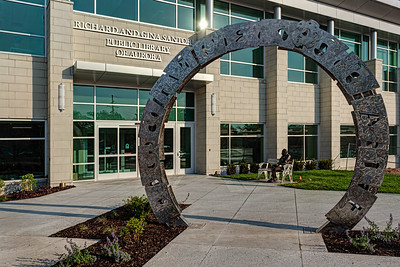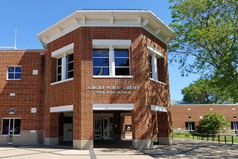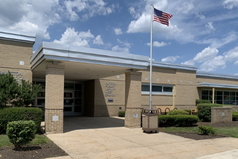Click for Info
 Santori Library
Santori LibraryClick for Info
 Eola Road Branch
Eola Road Branch West Branch
West BranchClick for Info
 Bookmobile
BookmobileClick for Schedule
Santori Library
Eola Road
West Branch
Bookmobile
Menu
 Santori Library
Santori LibraryClick for Info
 Eola Road Branch
Eola Road BranchClick for Info
 West Branch
West BranchClick for Info
 Bookmobile
BookmobileClick for Schedule
Established in 1881 by city ordinance, the Aurora Public Library was located in the Grand Army of the Republic (GAR) Hall at 23 East Downer Place until 1904, when it moved to a building at 1 E. Benton St. using a $50,000 grant from philanthropist Andrew Carnegie. In 1969 the library underwent a major renovation and two three-story wings and a modern façade were added on, expanding the building to 44,000 square feet. With an eye to the future, the library purchased the former Beacon-News property at 101 S. River St. in early 2010, and opened a new, state-of-the-art main library in June 2015. The main library, the Richard and Gina Santori Public Library, is a state-of-the-art center for technology, information, literacy, creativity, and community. Its 3 floors make up a media lab, Makerspace, history and genealogy room, Early Literacy Center, computer lab, and conference rooms.
In a 1953 experiment, a Bookmobile was leased from the Illinois State Library to extend services to Aurora’s schoolchildren. Pleased with the results, the library purchased that Bookmobile and has employed one ever since. The current Bookmobile has served the community since 2003.
In the 1990s, two branch libraries were added. The Eola Road Branch on the city’s east side opened in 1993 and was expanded in 2003 to meet heavy customer demand. The West Branch, on the campus of Washington Middle School, opened in 1998.
The Aurora Public Library District’s service area is contiguous with the boundaries of the City of Aurora, Illinois. With a population of 180,582 according to 2020 U.S. Census data, Aurora is the second largest city in Illinois, located 41 miles west of Chicago and stretching across four counties: Kane, DuPage, Kendall, and Will. Aurora is accessible by rail on the BNSF Metra commuter line and by five interchanges on the Interstate 88 East/West tollway corridor. The city is bisected by the Fox River accompanied by the Fox River Trail, which intertwines with the more local Virgil Gilman Trail.
Aurora is diverse by any measure. 42.7% of the population identifies as Hispanic or Latino, 34.9% as non-Hispanic white, 10.5% as African American, and 9.3% as Asian. Similarly, languages besides English are common in Aurora, with nearly 70,000 Spanish-speakers, 1,900 Tagalog, and a significant Urdu speaking population of 1,318. 45.3% of households speak a language other than English at home. 25.6% of Aurora residents are foreign-born. Median household income is $74,659, above the $68,428 average household income across Illinois. 10% of Aurora’s population meets federal poverty guidelines. 72.1% of Aurora’s working age population is in the workforce, compared to 65.1% in Illinois as a whole. Nearly 80% of Aurora residents have earned a high school diploma or equivalent, and 33% have a bachelor’s degree or higher. Over 12% of households lack access to robust computing and Internet services.
Aurora Public Library District facilities include the Richard and Gina Santori Public Library in the heart of downtown, the Eola Road Branch adjoining the Fox Valley Park District’s Eola Community Center and servs the east side, and the West Branch situated adjacent to Washington Middle School on the west side of Aurora. In addition, our active Outreach Services Department serves students, community centers, neighborhoods, senior living facilities, and homebound residents with two mobile libraries, the Bookmobile and the Mini-B.
The Aurora Public Library and the Board of Trustees stand in solidarity against any and all forms of racism, brutality, and hate. The unjust and senseless murder of Black people and people of color cannot, and will not, be tolerated. These deaths betray the foundations of the United States and the promise of "justice for all." May the loud cry of racial inequality and injustice deafen our ears and ignite real and transformative change.
This, however, will not happen until we look inward and hold ourselves, and others, accountable. We are responsible. Now is the time to demand real reform from all levels of government.
The fundamental mission of all public libraries is to create equity in our society by providing access to library materials, information, and enrichment activities for everyone. We want to equip and empower all people through literacy and the arts. We must not be deterred in our pursuit of racial equality and justice as these pursuits will impact and shape many generations to come. The library is and will remain committed to a program of action to support racial justice. Join us as we better ourselves and our community.
Approved by the board June 24, 2020